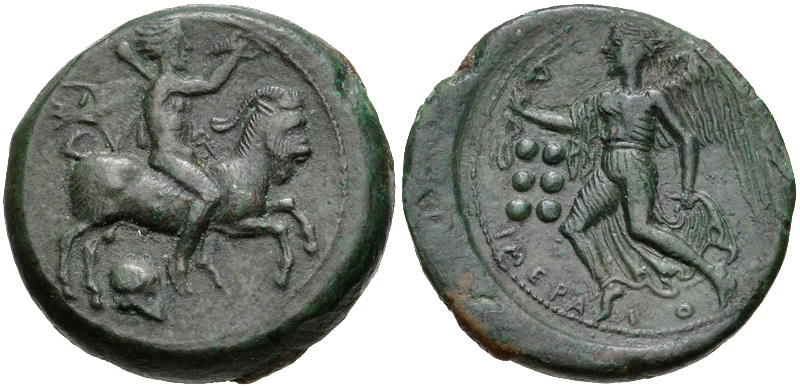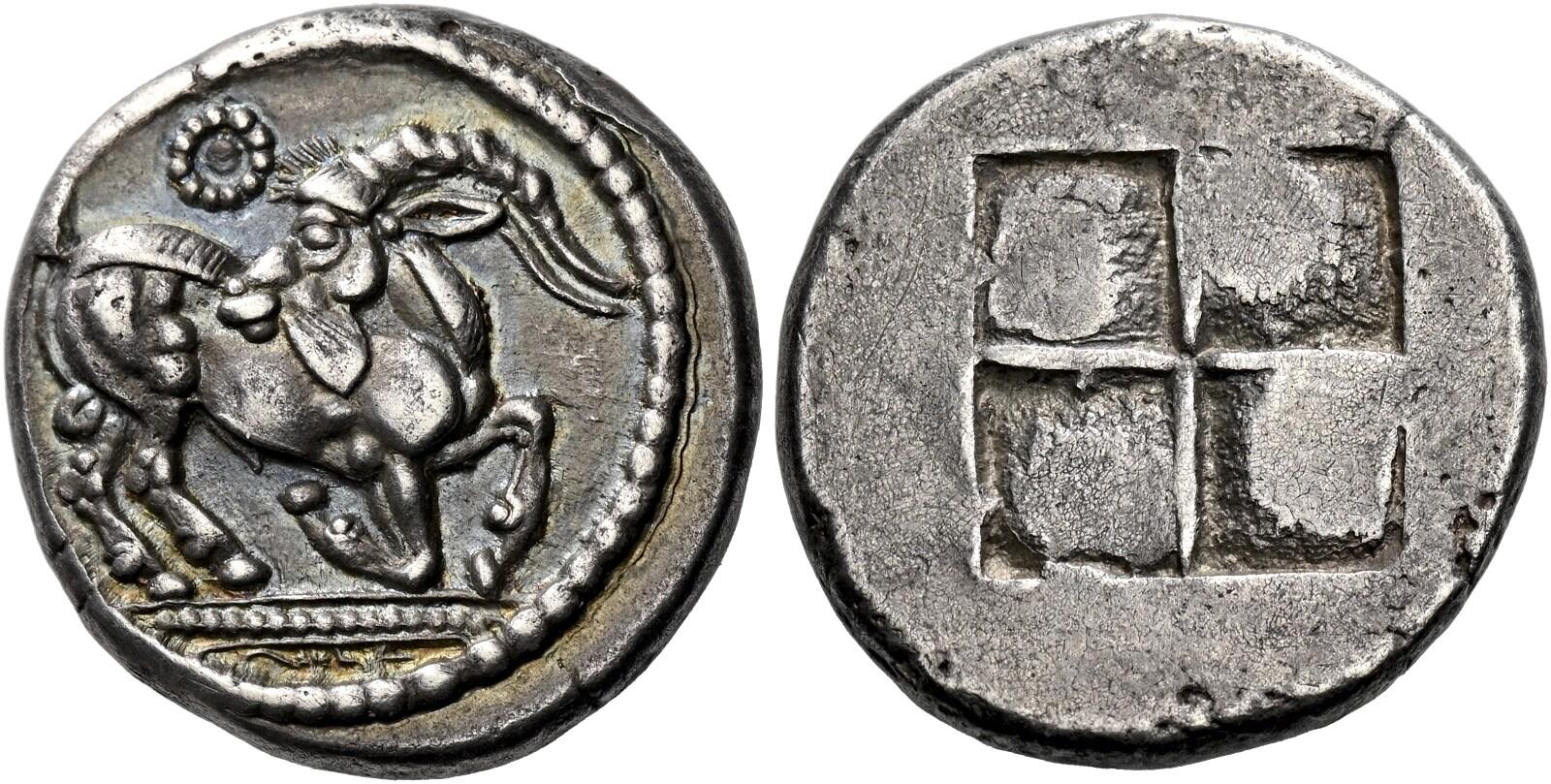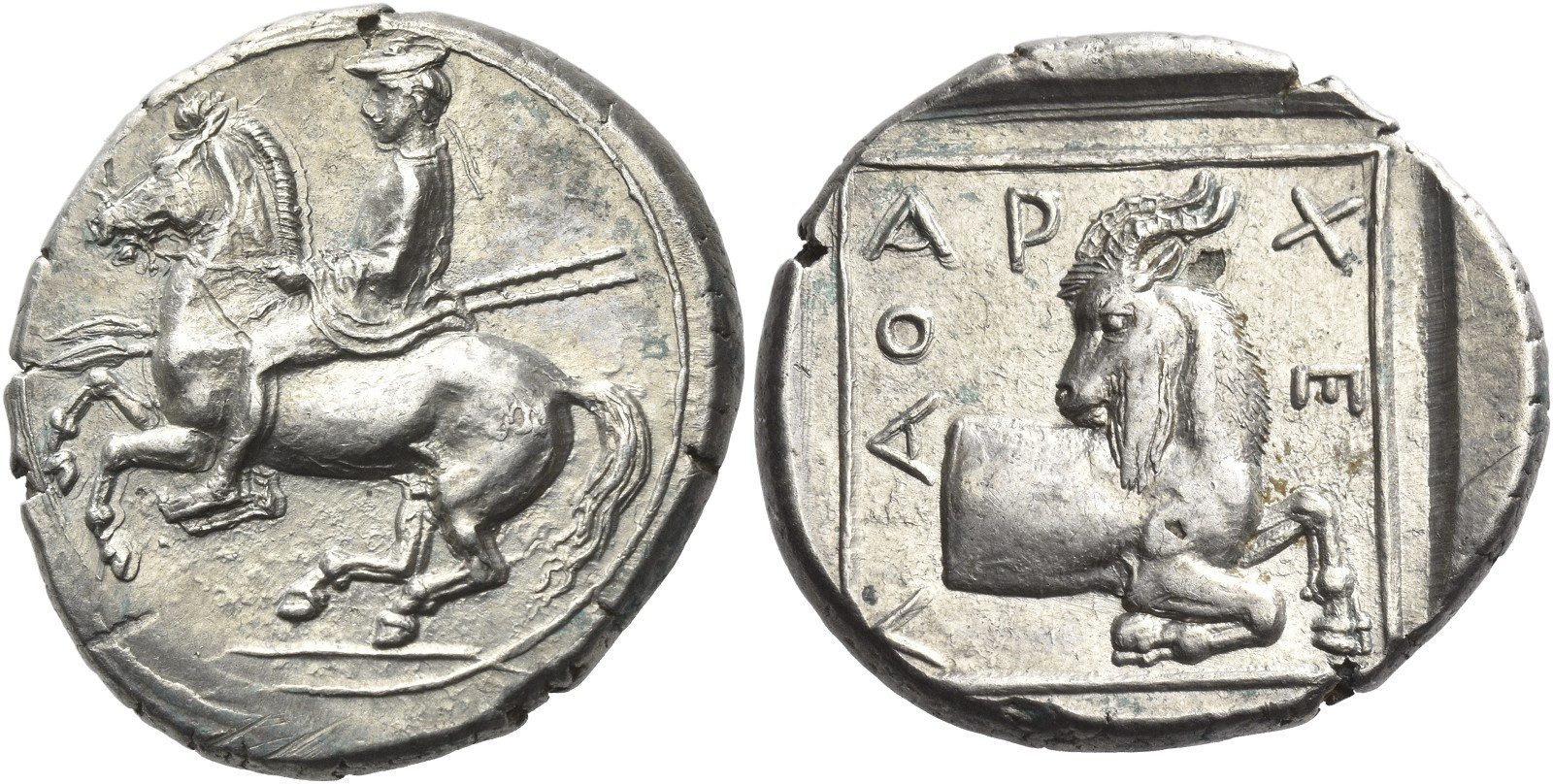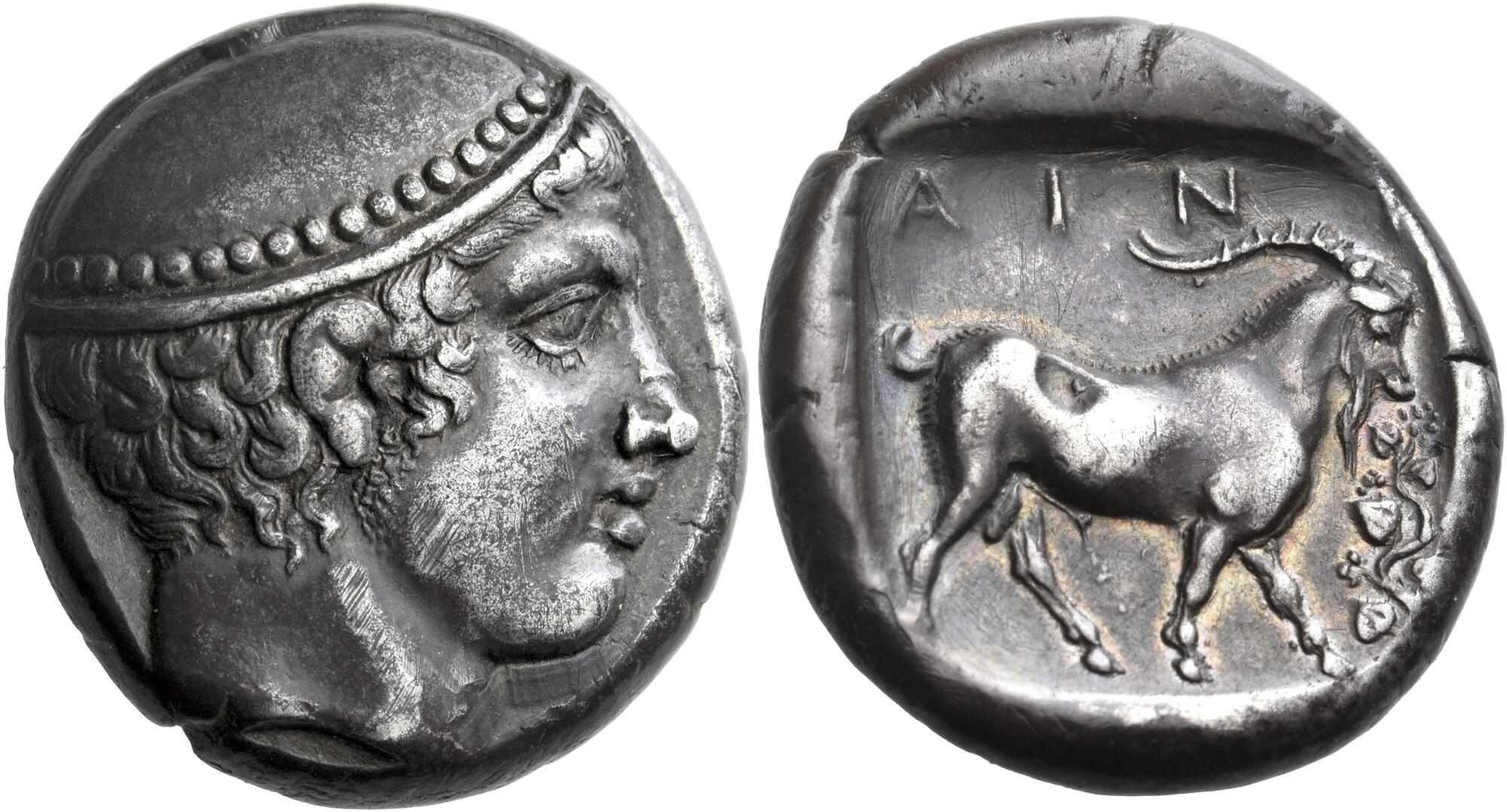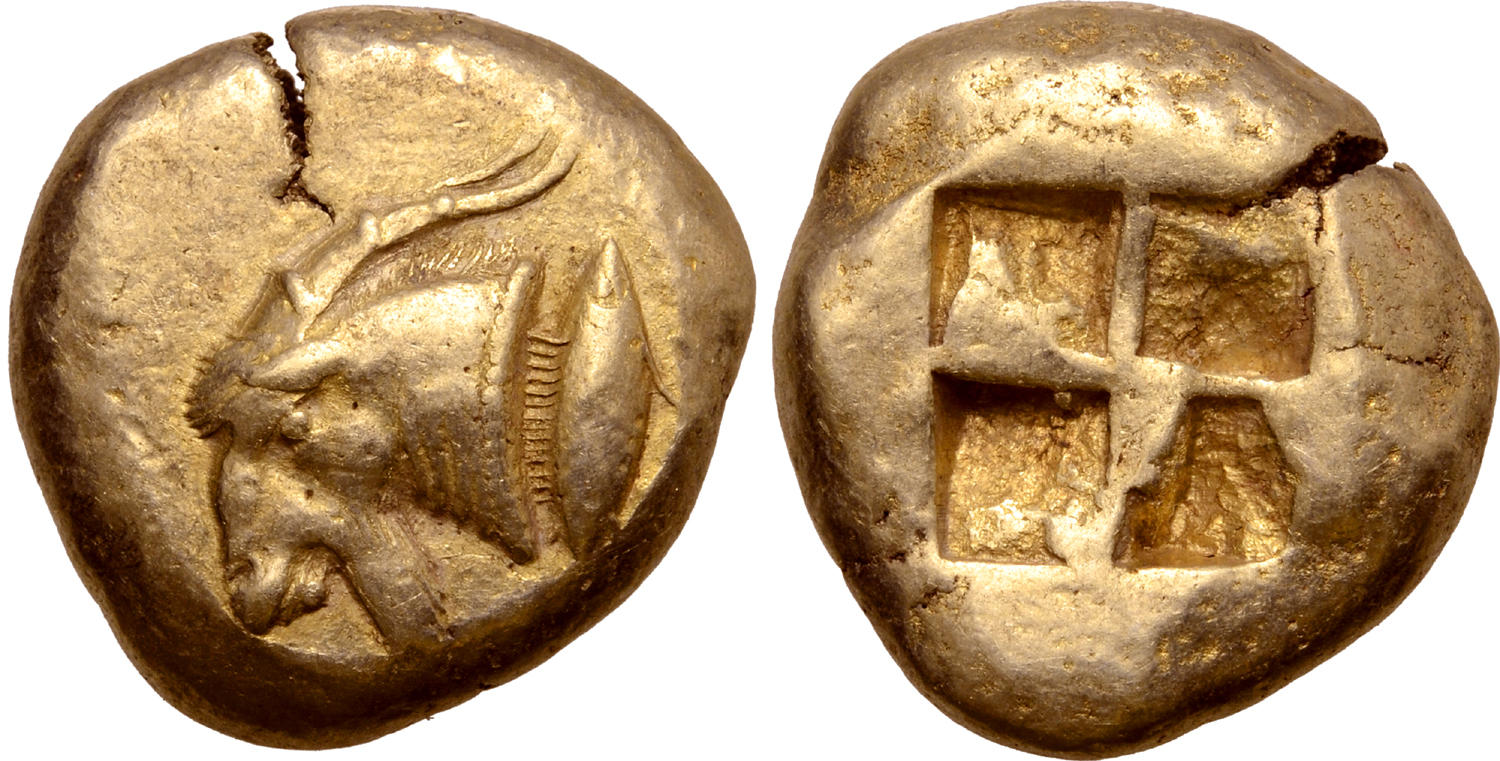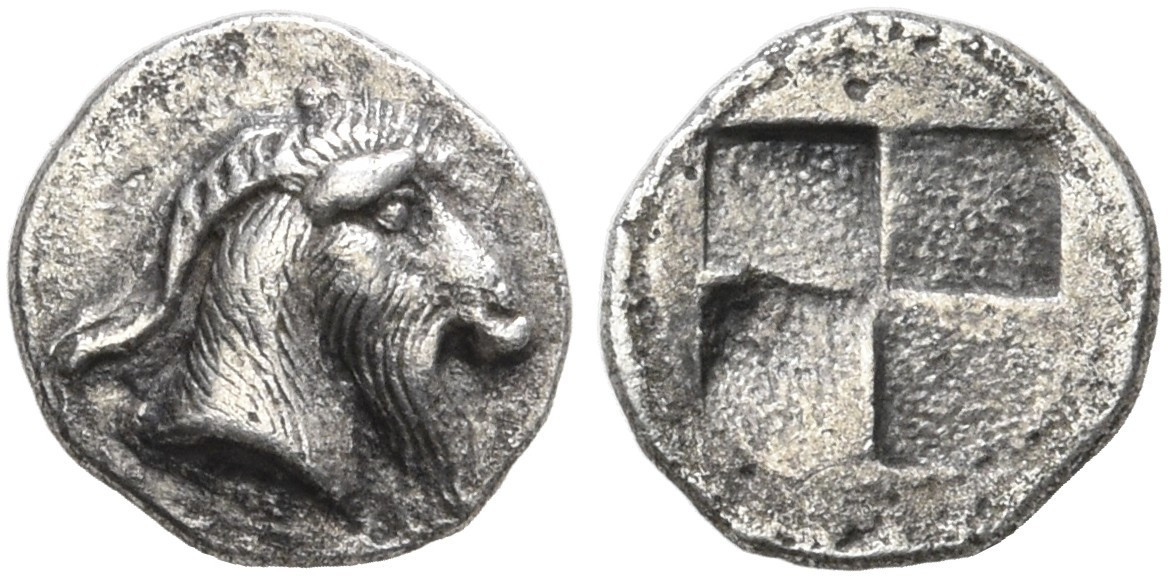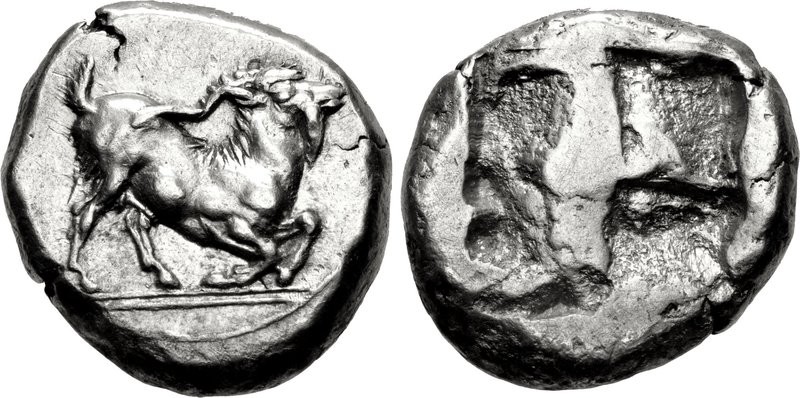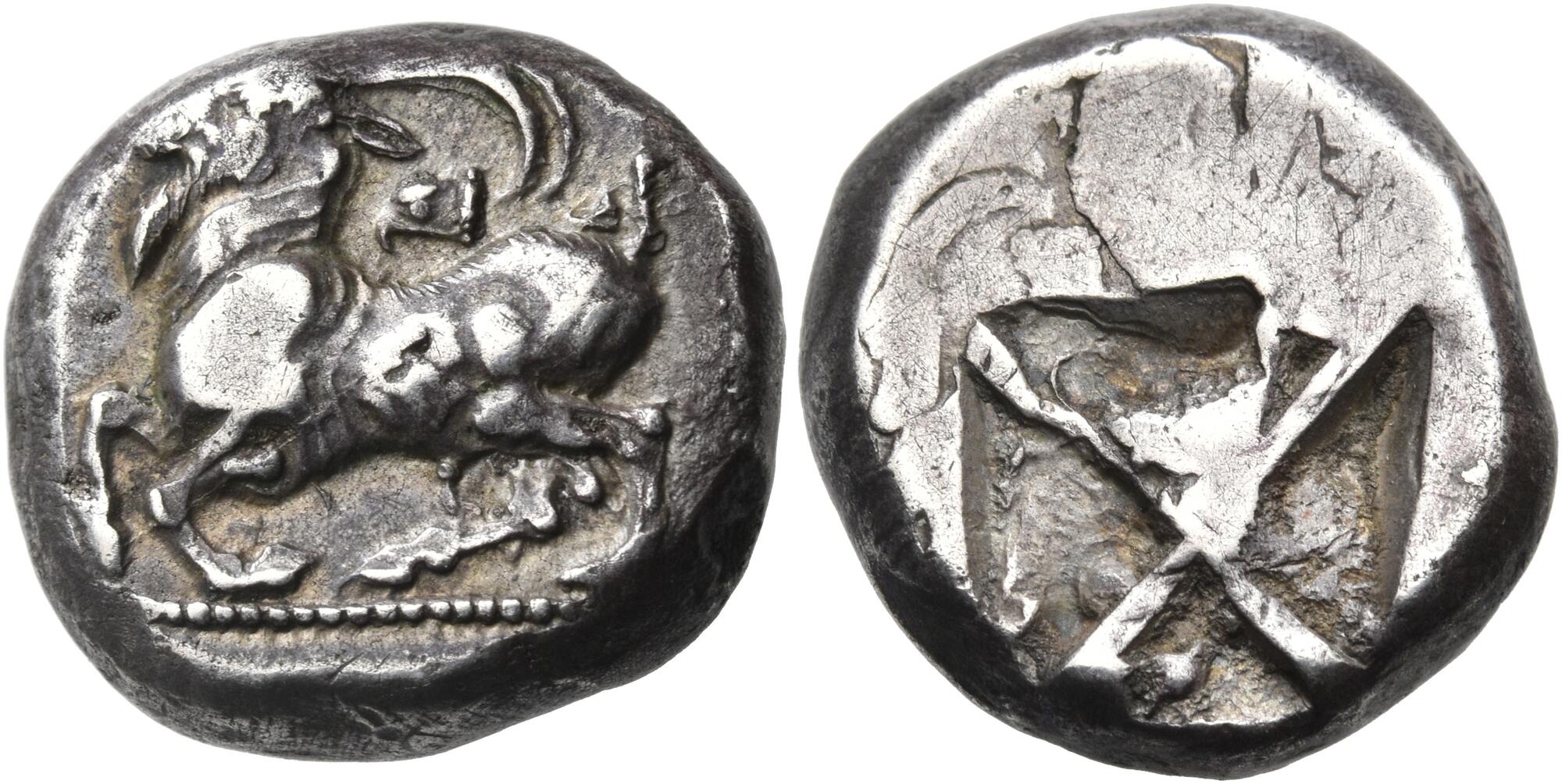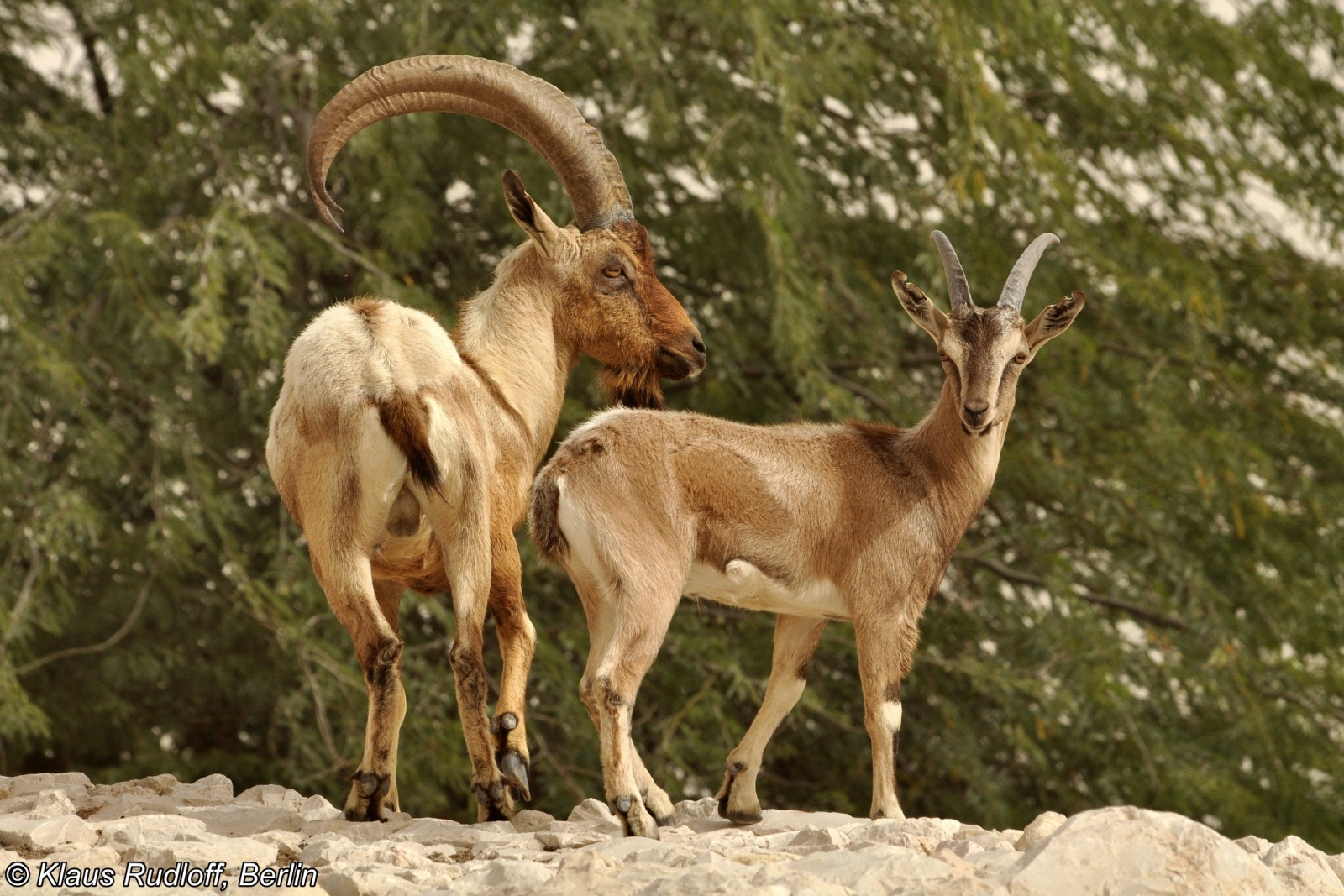On Kelenderis coins depicting goats, the goat has horns curved upwards at the ends. Depictions of goats with horns shaped in this way were common on coins in the Archaic and Classical periods in many regions across the Greek world, examples are shown in Figures 1–7. Depictions of goats with curved horns at the end are also found on ceramics from the Archaic and Classical periods.1
Coin types depicting goats with horns bent into a simple arc are less common. Coins from the Cycladic Paros show goats with both multiple curved horns and horns shaped into a simple arc, examples are shown in Figures 8–9. Arc-shaped horns are also known from Samaria, see Figure 10. However, simply curved horns are found quite frequently on pottery, seals and other objects since the Bronze Age.2
The bezoar ibex (Capra aegagrus aegagrus), which lives in the Taurus Mountains and other areas in the Anatolia, Caucasus and the Zagros Mountains, was probably common in Cilicia Trachea. However, males of this species have horns curved into a simple arc, see Figure 11. Nevertheless, it cannot be ruled out that there is or was a form of these wild goats with horns curved at the end like those on the Kelenderis coins, because similarly shaped horns can also be found in the Western Iberian ibex (Capra pyrenaica victoriae, also called Gredos ibex).3 In addition to this subspecies of mountain goat, a number of other wild and domesticated goat breeds are known with horns shaped in this way.4
It is therefore not possible to determine with certainty whether the goats on the Kelenderis coins were modeled after some form of the bezoar ibex or a local domesticated breed of goat (see also page The κέλης and the κελάδες). Moreover, as the coins from Paros mentioned above show, goats with different shaped horns may have occurred in the same region.
Figure 1. Sicily, Himera, c. 425–409 BC, AE Hemilitron.
Figure 2. Thraco-Macedonian tribes, c. 485–480 BC, AR Stater.
Figure 3. Kingdom of Macedon, Archelaos, Aigai mint, c. 413–399 BC, AR Stater.
Figure 4. Thrace, Ainos, c. 412/1–410/09 BC, AR Tetradrachm.
Figure 5. Mysia, Kyzikos, c. 550–500 BC, EL Stater.
Figure 6. Cyprus, Salamis, Evagoras I, c. 411–374 BC, AR Stater.
Figure 7. Asia Minor, uncertain mint, c. 5th century BC, AR Hemiobol.
Figure 8. Cyclades, Paros, c. 475 BC, AR Drachm.
Figure 9. Cyclades, Paros, c. 500–497/5 BC, AR Drachm.
Figure 10. Samaria, c. 375–333 BC, AR Obol.
Figure 11. Bezoar ibex (Capra aegagrus aegagrus), male and female.
Author: Klaus Rudloff (e-mail: kdrudloff(at)web.de).
Source: BioLib.cz / https://www.biolib.cz/en/image/id466342/.
| Credits: | |
| Figure 1: | Classical Numismatic Group, Electronic Auction 249 (9 February 2011), Lot 16 (acsearch.info URL). |
| Figure 2: | Numismatica Ars Classica NAC AG, Auction 154 (19 May 2025), Lot 1158 (acsearch.info URL). |
| Figure 3: | Numismatica Ars Classica NAC AG, Auction 158 (5 November 2025), Lot 16 (biddr.com URL). |
| Figure 4: | Nomos AG, Auction 30 (6 November 2023), Lot 1263 (acsearch.info URL). |
| Figure 5: | Roma Numismatics Limited, Auction 17 (28 March 2019), Lot 459 (acsearch.info URL). |
| Figure 6: | Roma Numismatics Limited, Auction 23 (24 March 2022), Lot 352 (acsearch.info URL). |
| Figure 7: | Leu Numismatik, Web Auction 20 (16 July 2022), Lot 1387 (acsearch.info URL). |
| Figure 8: | Nomos AG, Auction 33 (9 June 2024), Lot 1225 (acsearch.info URL). |
| Figure 9: | Classical Numismatic Group, Triton XVIII (6 January 2015), Lot 554 (acsearch.info URL). |
| Figure 10: | Classical Numismatic Group, Electronic Auction 600 (3 December 2025), Lot 554 (CNG URL). |
| Figure 11: | Klaus Rudloff, BioLib.cz / https://www.biolib.cz/en/image/id466342/. |
1 For example, the Metropolitan Museum of Art in New York, Object Nos. 1979.11.7 (Corinthian krater, c. 580–550 BC); 2011.604.3.1384 (fragment of an Attic skyphos, early 5th century BC); 21.88.80 (Attic oinochoe, c. 400 BC).
2 For example, the Metropolitan Museum of Art in New York, Object Nos. 59.52 (Central Iran, storage jar, c. 4000–3600 BC); 74.51.4371 (Cyprus, seal, c. 15th–13th century BC); 26.31.328 (Minoan serpentine lentoid, c. 1400–1375 BC); 74.51.552 (Cypriot terracotta jug, c. 750–600 BC); 55.71.9 (East Greek, fragment of a krater, 6th century BC); 1979.446 (Persian rhyton, c. 4th century BC).
3 See, for example, Wikipedia.org, Capra pyrenaica victoriae.
4 See BioLib.cz: Capra aegagrus f. hircus “Cameroon Dwarf”, Capra aegagrus f. hircus “Cashmere”, Capra aegagrus f. hircus “Hercynian”, Capra aegagrus f. hircus “Juan Fernandez”, Capra aegagrus f. hircus “Ovambo”, Capra aegagrus f. hircus “Orobica”.
10 November 2025 – 15 November 2025
